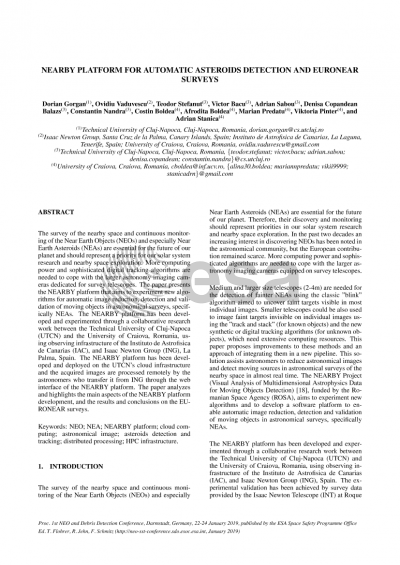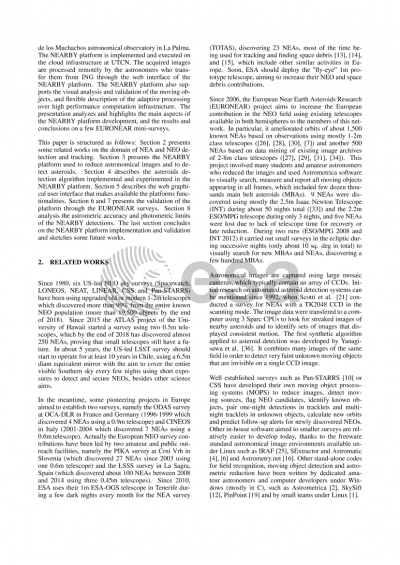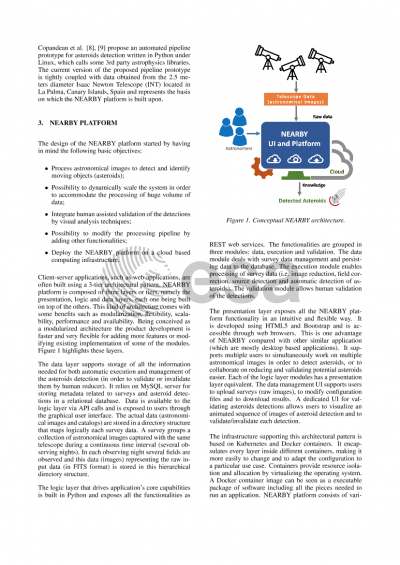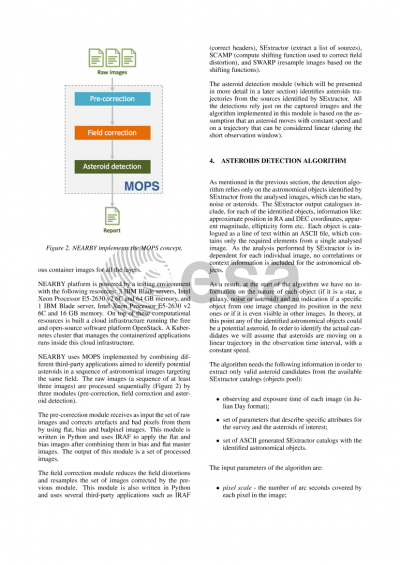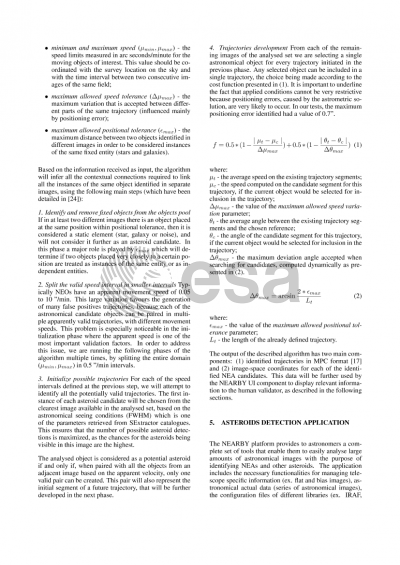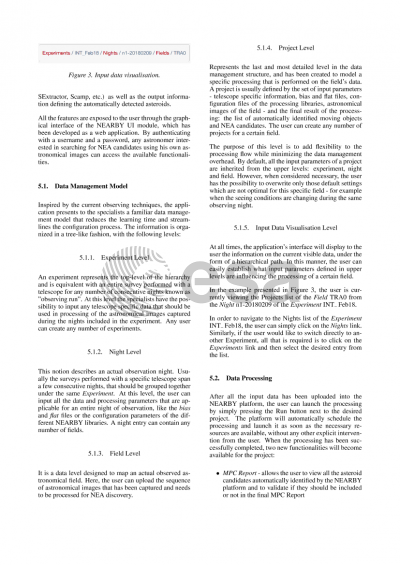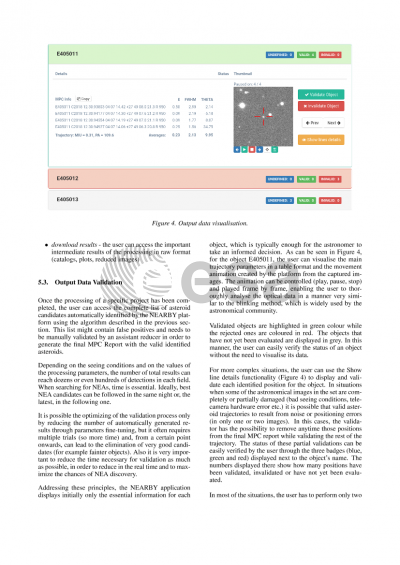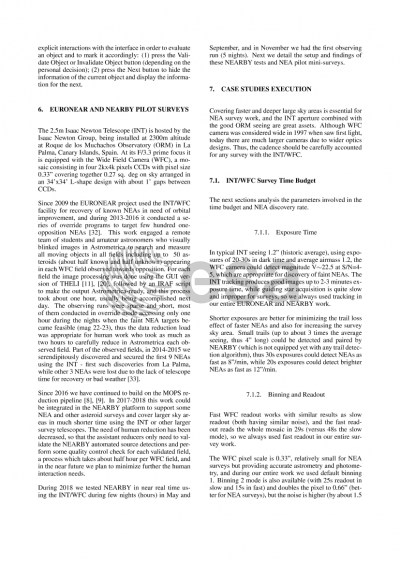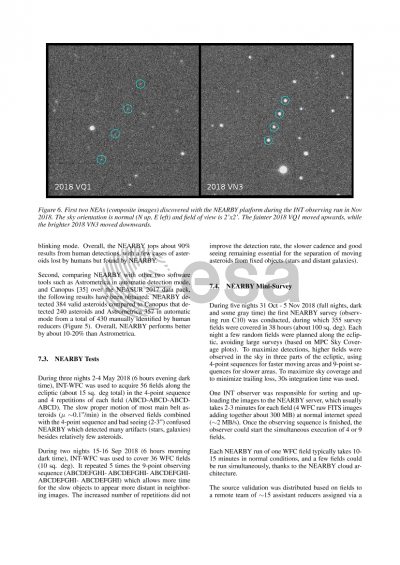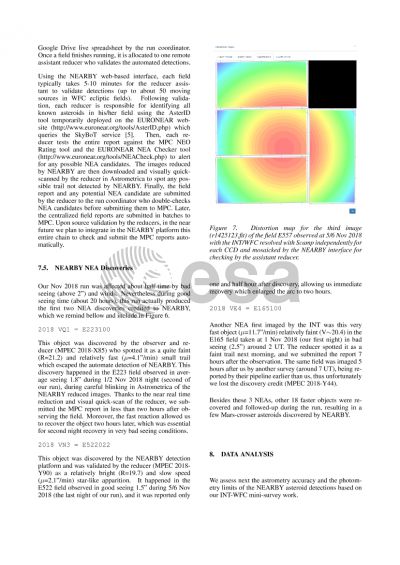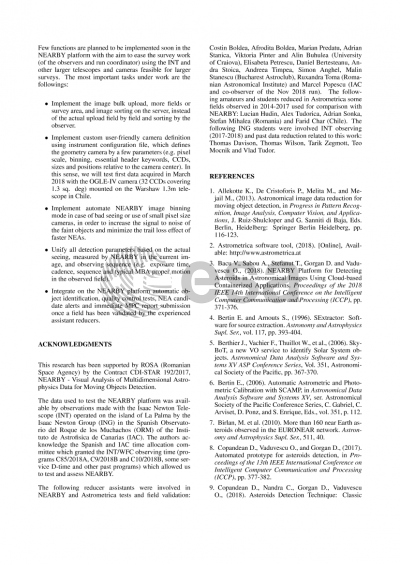Document details
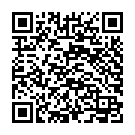
Abstract
The survey of the nearby space and continuous monitoring of the Near Earth Objects (NEOs) and especially Near Earth Asteroids (NEAs) are essential for the future of our planet. In the past two decades an increasing interest in discovering NEOs has been noted in the astronomical community, but the European contribution remained scarce. More computing power and sophisticated algorithms are needed to cope with the larger astronomy imaging cameras dedicated for survey telescopes. Medium and larger size telescopes (2-4m) are needed for the detection of fainter NEAs using the classic "blink" algorithm aimed to uncover faint targets visible in most individual images. Smaller telescopes could be also used to image faint targets invisible on individual images using the "track and stack" (for known objects) and the new synthetic or digital tracking algorithms (for unknown objects), which need extensive computing resources. We propose to improve these methods and implement them in a new pipeline to reduce astronomical
images and detect moving sources in astronomical surveys of the nearby space in almost real time needed to secure new discoveries.
The NEARBY Project (Visual Analysis of Multidimensional Astrophysics Data for Moving Objects Detection), funded by the Romanian Space Agency (ROSA), aims to experiment new algorithms and to develop a software platform to automatic image reduction, detection and validation of moving objects in astronomical surveys, specifically Near Earth Asteroids (NEAs).
The NEARBY platform has been developed and experimented through a collaborative research work between the Technical University of Cluj-Napoca (UTCN) and the University of Craiova, Romania, using observing infrastructure of the Instituto de Astrofisica de Canarias (IAC), and Isaac Newton Group (ING), Spain. The experimental validation has been achieved by survey data provided by the Isaac Newton Telescope (INT) at Roque de los Muchachos astronomical observatory in La Palma.
The NEARBY platform is implemented and executed on the cloud infrastructure at UTCN. The acquired images are processed remotely by the astronomers who transfer it from ING through the Web NEARBY
application. The NEARBY platform also supports the visually analysis and validation of the moving objects, flexible description of the adaptive processing over high performance computation infrastructure.
The presentation analyzes and highlights the main aspects of the NEARBY platform development, and the results and conclusions on the EURONEAR surveys.
References:
[1] NEARBY project – Visual Analysis of Multidimensional Astrophysics Data for Moving Objects Detection,
http://cgis.utcluj.ro/nearby/
[2] Stefanut T., Bacu V., Nandra C., Balazs D., Gorgan D. and Vaduvescu O., (2018) NEARBY Platform:
Algorithm for Automated Asteroids Detection in Astronomical Images. Proceedings of the 14th IEEE
Intelligent Computer Communication and Processing (ICCP), IEEE-Press, in print.
[3] Vaduvescu O et al. (2013) 739 observed NEAs and new 2-4m survey statistics within the EURONEAR
network. Planetary and Space Sciences. 85:299-311.
[4] Gorgan D., Bacu V., Stefanut T., Rodila D., Mihon D., (2012) Earth Observation application
development based on the Grid oriented ESIP satellite image processing platform, Journal of
Computer Standards & Interfaces, 34(6):541–548.
Preview
